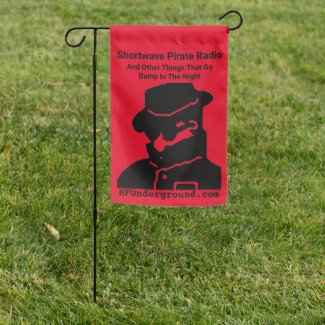15
« on: January 29, 2018, 2056 UTC »
I took my trusty Sangean ATS-909x for a drive. I set it on the dash of my Jeep (which has a handy tray exactly the right size to hold the radio), with the whip antenna partially extended. I tuned it to 13.560 in USB mode.
In my driveway, I heard nothing, but my Drake R7 upstairs, connected to an 80 meter dipole, consistently picks up at least two pulsed signals on the same frequency - very similar to what others have reported.
I live in a smallish city in upstate NY. I heard little when driving through residential areas, but started to pick up quite a few signals whenever I would drive past commercial zones.
In particular, I wanted to drive past the entrance doors of my local KMart, since they use an RFID tag security scanner right at the exit to detect shoplifting. As expected, this area (within about 100 feet of the entrance), produced an extremely strong unmodulated carrier - peaking at about S9 +20 close to the entrance but fading quickly as I drove away.
A similar unmodulated 13.560-ish carrier was noted near the entrance of a Walgreens, which has a similar theft detection system.
I heard pulsed signals at several locations, and found that these were coming from convenience stores with gas pumps. The signals were very strong at the pumps themselves. All of the pumps have standard credit card readers set up to read both magnetic stripe and chip-enabled cards. These locations all seemed to be generating pulses considerably faster than 55-to-60 pulses per minute though.
Driving back home, I started picking up a signal absolutely identical to those in several of the YouTube videos linked in other posts. These were coming from a small manufacturing company. I know that this particular building uses security badge readers for employee access. There is a badge reader panel at each entrance door, and arriving employees hold their company ID badge up to the panel to automatically unlock the door.
In short, I’m certain that all of the signals picked up by numerous individuals at widely separated geographic locations are strictly local in origin. No doubt any urban area will be awash in both modulated and unmodulated signals centering on 13.560 MHz coming from various RFID enabled systems at commercial establishments.


